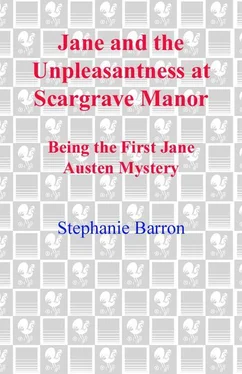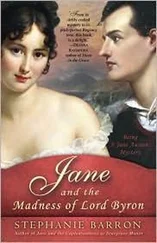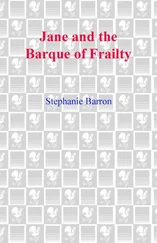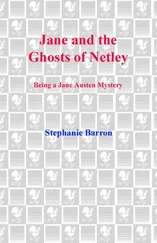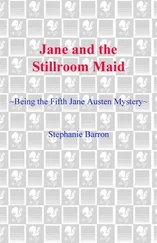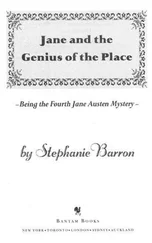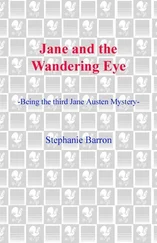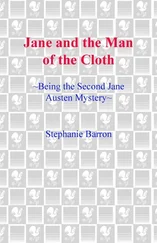Stephanie Barron - Jane and the Unpleasantness at Scargrave Manor
Здесь есть возможность читать онлайн «Stephanie Barron - Jane and the Unpleasantness at Scargrave Manor» весь текст электронной книги совершенно бесплатно (целиком полную версию без сокращений). В некоторых случаях можно слушать аудио, скачать через торрент в формате fb2 и присутствует краткое содержание. Жанр: Исторический детектив, Иронический детектив, на английском языке. Описание произведения, (предисловие) а так же отзывы посетителей доступны на портале библиотеки ЛибКат.
- Название:Jane and the Unpleasantness at Scargrave Manor
- Автор:
- Жанр:
- Год:неизвестен
- ISBN:нет данных
- Рейтинг книги:5 / 5. Голосов: 1
-
Избранное:Добавить в избранное
- Отзывы:
-
Ваша оценка:
- 100
- 1
- 2
- 3
- 4
- 5
Jane and the Unpleasantness at Scargrave Manor: краткое содержание, описание и аннотация
Предлагаем к чтению аннотацию, описание, краткое содержание или предисловие (зависит от того, что написал сам автор книги «Jane and the Unpleasantness at Scargrave Manor»). Если вы не нашли необходимую информацию о книге — напишите в комментариях, мы постараемся отыскать её.
Jane and the Unpleasantness at Scargrave Manor — читать онлайн бесплатно полную книгу (весь текст) целиком
Ниже представлен текст книги, разбитый по страницам. Система сохранения места последней прочитанной страницы, позволяет с удобством читать онлайн бесплатно книгу «Jane and the Unpleasantness at Scargrave Manor», без необходимости каждый раз заново искать на чём Вы остановились. Поставьте закладку, и сможете в любой момент перейти на страницу, на которой закончили чтение.
Интервал:
Закладка:
13
Le Beau Monde was simply one of the fashionable journals avidly read by members of select Georgian society; its fashion plates presented the latest in ladies’ and gentlemen's clothing. — Editor's note.
14
Mantua-maker is a Georgian term for dressmaker, after the mantua, a type of gown worn in the eighteenth century. It gradually fell out of use, to be replaced by the French modiste , and eventually by dressmaker. — Editor's note.
15
The Countess's use of the term magistrate may confuse some readers, who are aware that magistrates were generally salaried individuals appointed to keep order in large cities. The correct term for Sir William Reynolds's office is Justice of the peace — an unsalaried position usually accorded a member of the country gentry. In rural areas, however, the two titles were often used interchangeably, since the unpaid justice of the peace performed the essential duties of a magistrate. — Editor's note.
16
The Lord Lieutenant of the County was an office usually accorded a high-ranking peer; his chief duties were to commission the various local justices of the peace, or magistrates, and to call out the militia in time of invasion. — Editor's note.
17
It is unclear from the text of which former suitor Jane is thinking. Because these manuscripts were intended as private journals, occasional passages exist where Jane is clearly “talking to herself.” — Editor's note.
18
This letter, presumably the one in which Jane imparted the news of the Earl's death to her sister, is no longer contained in the journal. — Editor's note.
19
Three London courts heard common-law cases — King's Bench, the Exchequer, and Common Pleas. A King's Bench barrister would try criminal cases; an Exchequer barrister, disputes over money (customs duties, taxes, fines) owed the Crown, and a Common Pleas barrister, small claims. — Editor's note.
20
Because solicitors brought cases to barristers for trial, and collected the fee as a “gratuity” in thanks for the barristers’ efforts, solicitors were considered tradesmen while barristers preserved their status as gentlemen. The same distinction prevailed between physicians — educated professionals who could be received at Court — and surgeons, village doctors who could not. — Editor's note.
21
Austen's tone in this passage evokes the breathless morbidity of the Gothic novels that were quite popular in her day. Such authors as Ann Radcliffe and Charlotte Smith penned ghoulish tales intended to titillate and alarm their largely female audience. Though Austen often poked fun at such literature — Northanger Abbey is in part a spoof of these novels — she did read them, and on this night at least, appears to have been somewhat influenced by their powerful fantasies. — Editor's note.
22
Pattens were small rings, usually of metal, that were strapped onto the bottom of shoes to raise the feet a few inches above muddy streets or slushy paths. Though still worn in both country and town in Austen's day, they were considered decidedly unfashionable by mid-century. — Editor's note.
23
Hatchments were family shields, shrouded in black crape and mounted over the windows of a great house to inform the public that the family was in mourning. — Editor's note.
24
A gaming-hell was the Georgian term for a gambling den. — Editor's note.
25
The Royal Horse Guards, one of three cavalry regiments charged with guarding the Royal Household, were nicknamed the Blues due to the color of their uniforms. — Editor's note.
26
White's was perhaps the most exclusive gentlemen's club in London during Austen's time. It is a sign of Fitzroy Payne's social status and his place among a fashionable set that he is a member there. — Editor's note.
27
Anne Lefroy, “Madam” among her acquaintance, was Jane's dearest friend during her childhood days in Steventon, Hampshire, despite the disparity in their ages. Anne Lefroy was to die in 1804 as the result of a fall from her horse. — Editor's note.
28
As noted elsewhere, Ann Radcliffe, who wrote The Mysteries of Udolpho , and Charlotte Smith, author of Ethelinde , were two authors Jane Austen read, although they were also practitioners of the Gothic formulas she sometimes lampooned for their unnatural characters. — Editor's note.
29
The medical dissection of corpses was a practice reserved for the bodies of executed criminals, which were often turned over to doctors for scientific study. Anatomization, as it was called, was considered the most degrading fate possible for the body of a loved one, so that even the families of condemned criminals sought to hide their corpses after execution, to prevent such disgrace. — Editor's note.
30
Our notion of a defendant being innocent until proven guilty is relatively recent. Until 1848, a magistrate was not charged with a presumption of innocence on the part of the defendant, or with the objective consideration of evidence, but merely with constructing a case against the accused. Until 1837, a lawyer for the accused was not allowed to query witnesses or cross-examine them, and not until the turn of the century was the accused allowed to testify on his or her own behalf. — Editor's note.
31
Evangelicalism was a reformist movement within the Church of England that arose in the late eighteenth century. Somewhat Calvinistic in its bent, it opposed moral laxity and frivolity of most kinds, particularly among the clergy. Though Jane Austen approved of clergymen taking their duties seriously, she considered Evangelicals excessive in their ardor. — Editor's note.
32
In 1801, George Austen, Jane's father passed his Steventon living (or parish appointment), its rectory, and most of its furnishings to his son James, a clergyman like himself, and moved with his wife and daughters to Bath. — Editor's note.
33
The dower house traditionally became the home of a widowed lady when her son acceded to his father's tide, and took possession of his ancestral seat. The son's wife would then accede to his mother's title. For example, had Frederick Payne's mother still lived when he became the Earl, she would have been addressed as the Dowager Countess of Scargrave, while Isobel was addressed as Countess. — Editor's note.
34
Spencer Perceval (later Prime Minister of England, assassinated in the House of Commons, 1812) was Attorney-General in 1803, and thus should have argued the case for the Crown. His “indisposition” may, in fact, have been overwork — he was engrossed at this time in preparing the prosecution of a Colonel Despard, who had recently plotted the assassination of George III and the overthrow of the government. — Editor's note.
35
As noted elsewhere, a defense lawyer in 1802 could do very little for his client — being barred from questioning or cross-examining the prosecution's witnesses or allowing the defendant to testify on his or her own behalf. His role was limited to arguing points of law as presented in the prosecution's case. — Editor's note.
Читать дальшеИнтервал:
Закладка:
Похожие книги на «Jane and the Unpleasantness at Scargrave Manor»
Представляем Вашему вниманию похожие книги на «Jane and the Unpleasantness at Scargrave Manor» списком для выбора. Мы отобрали схожую по названию и смыслу литературу в надежде предоставить читателям больше вариантов отыскать новые, интересные, ещё непрочитанные произведения.
Обсуждение, отзывы о книге «Jane and the Unpleasantness at Scargrave Manor» и просто собственные мнения читателей. Оставьте ваши комментарии, напишите, что Вы думаете о произведении, его смысле или главных героях. Укажите что конкретно понравилось, а что нет, и почему Вы так считаете.
